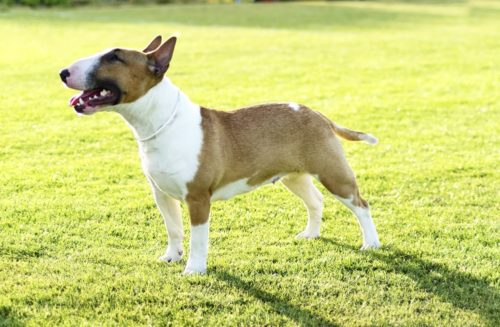
Novices to a conformation ring reasonably assume that evaluation of their dog begins after they’ve entered the ring and assumed their place in line. Veterans, however, know better. Some judges have been known to glance outside the ring as dogs prepare to enter it, and some are especially alert to the dogs as they enter the ring. Why?
Because how a dog stands and gaits on its own offers an important clue of the dog’s overall balance and correctness.
How a dog stands without it being stacked or baited into position is called its natural stance. Hand stacking a dog can cover up weaknesses, but how a dog stands naturally reveals whether the front legs are vertical to the ground or not, if the rear pasterns are perpendicular to the ground, and if the dog is dispersing its weight evenly over its four legs, something known as “columns of support.” Are the front and rear legs nearly parallel? When seen from the rear, is there almost a straight line from the hip joint through the stifle joint to the hock, to the rear pastern and to the foot? This is why the free stack at the end of a “down and back” is important. It’s the dog’s natural stance, and if the dog isn’t built right, there is no place to hide. Few will ever forget the free stack demonstrated by Ch. Kan-Point’s VJK Autumn Roses, aka Carlee, the German Shorthaired Pointer who won Best in Show at Westminster in 2005 with her “stack heard around the world.”
Knowing the breed’s standard is critical because some of the aforementioned aspects are incorrect for the breed. For instance, straight front legs in an achondroplastic breed is wrong wrong wrong. The wrists in these breeds is typically closer together than the shoulder joints are, so when viewed from the front, straight columns of support are incorrect.
Image: Bull Terrier/DepositPhoto
